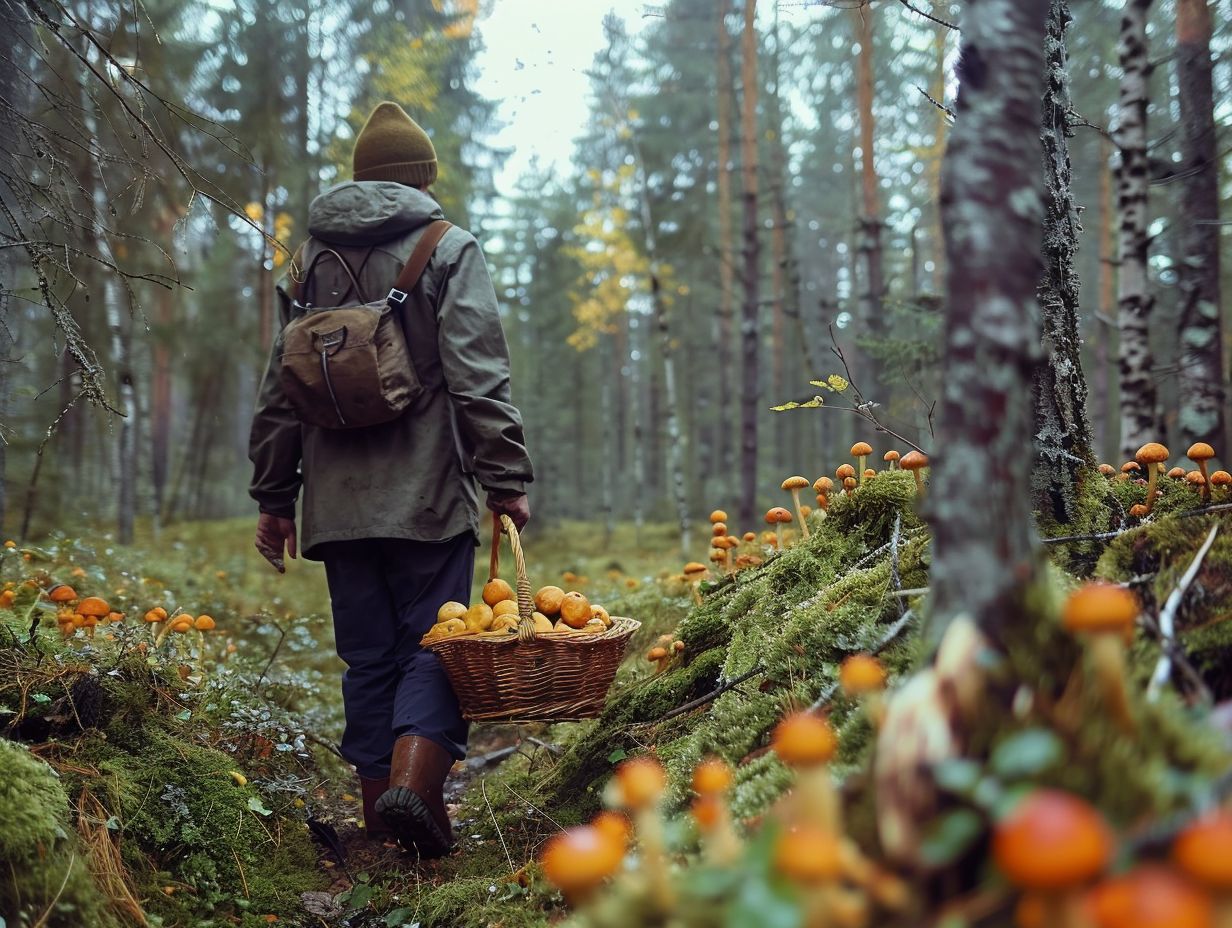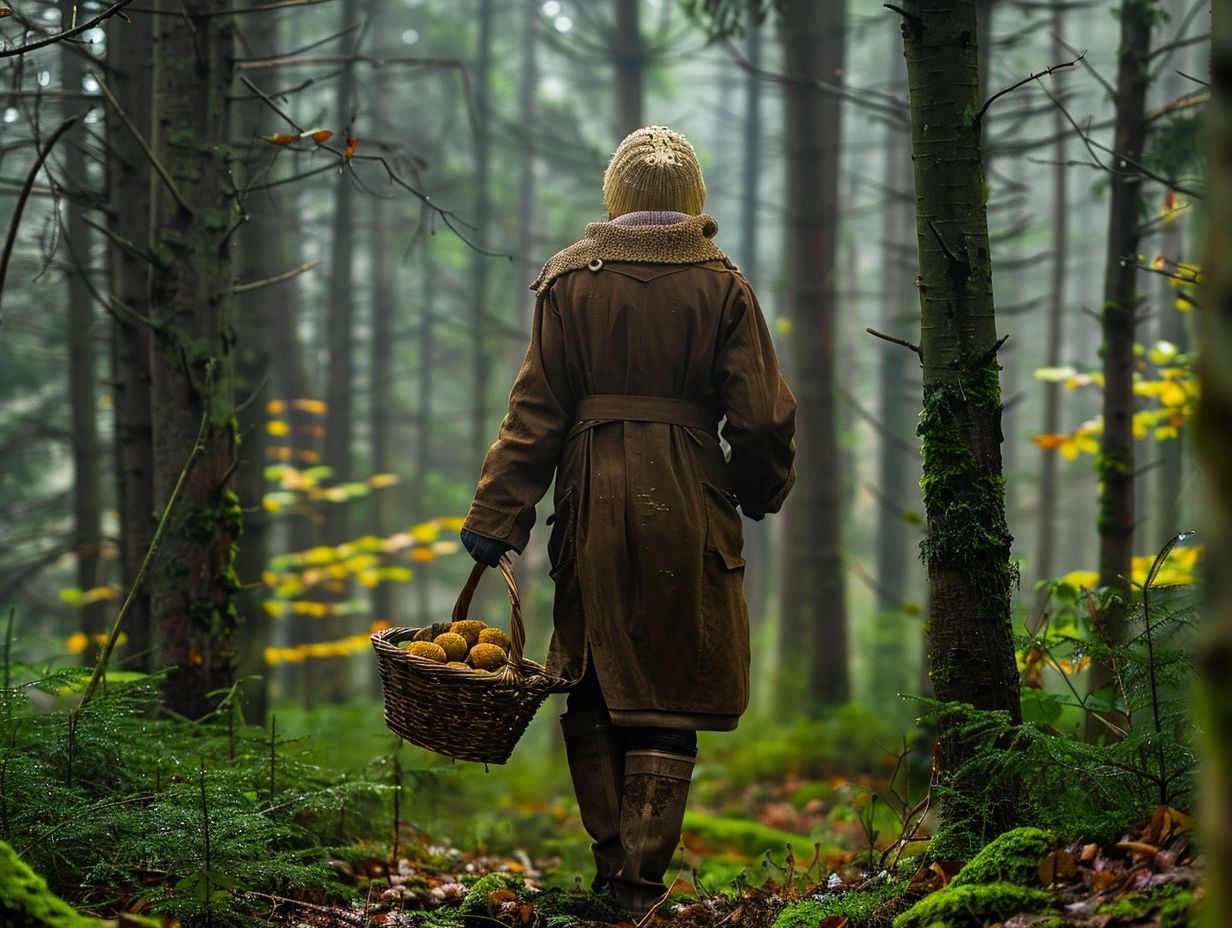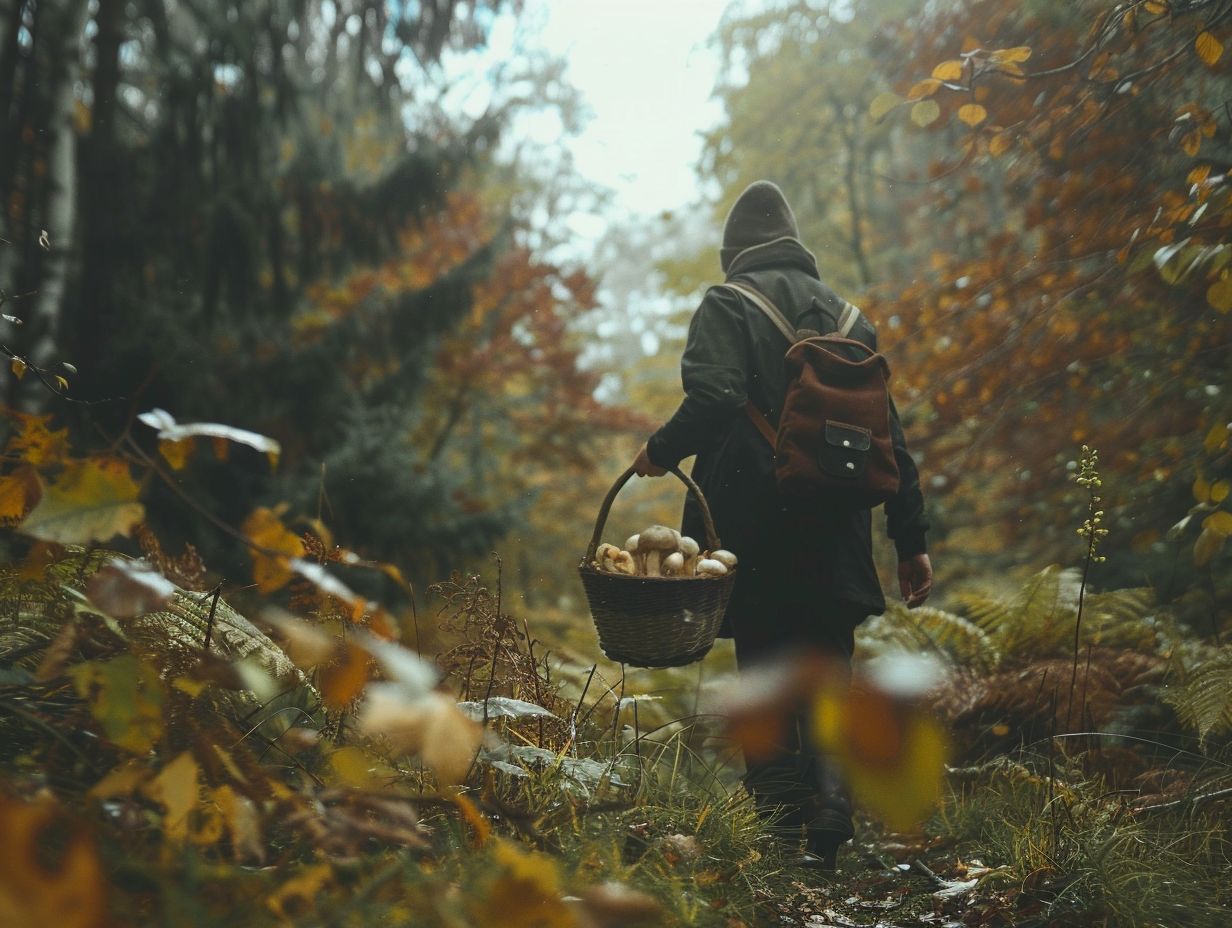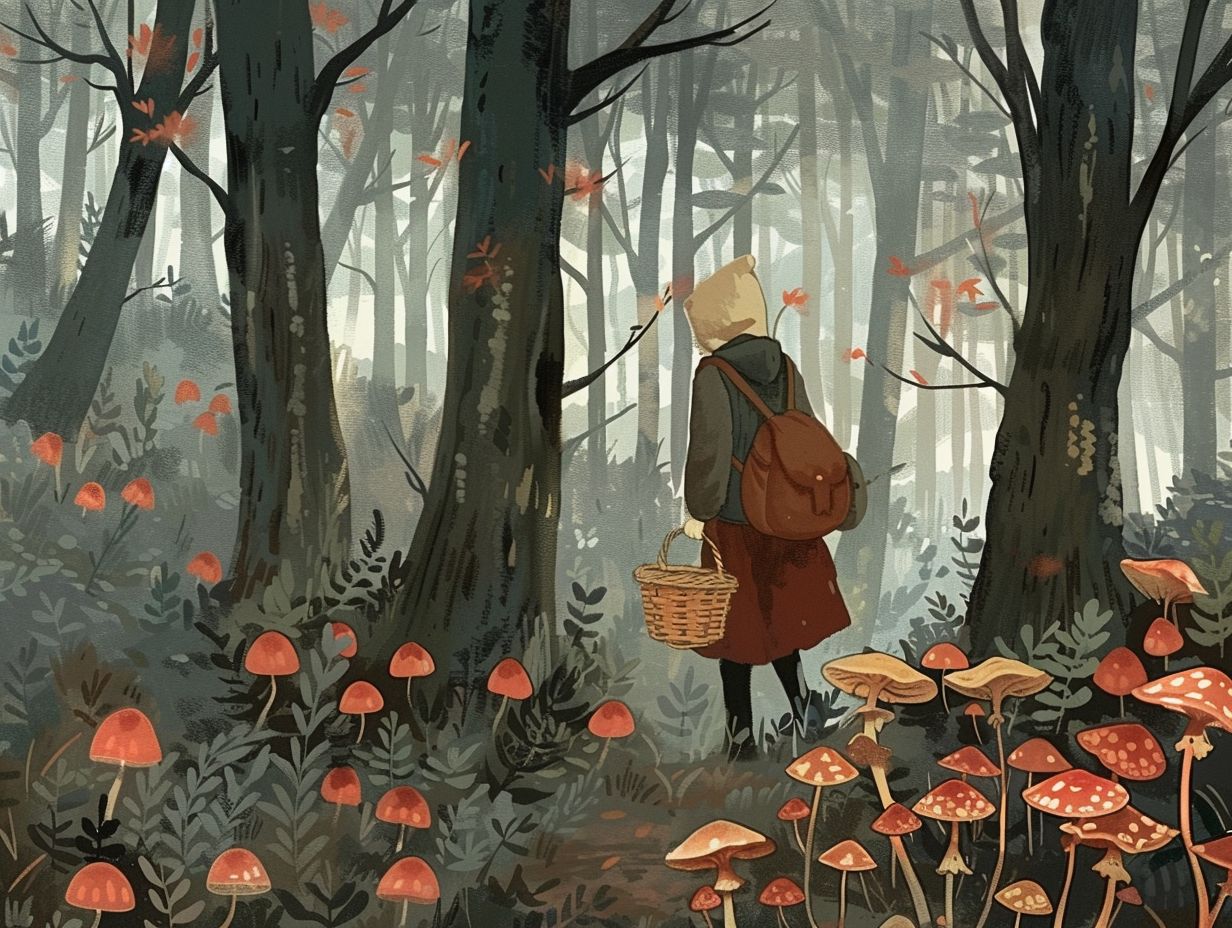If you have ever found yourself wandering through the woods and coming across a cluster of mushrooms, you may have pondered the possibilities of mushroom foraging.
In this comprehensive guide, you will delve into the advantages of foraging in the vicinity of campsites, which include access to a variety of mushroom species along with the associated environmental and health benefits.
You will acquire knowledge on how to distinguish edible mushrooms, adhere to foraging safety protocols, and adopt best practices for sustainable foraging aimed at preserving the environment and mushroom populations.
Moreover, valuable tips on preparing and cooking the mushrooms you forage will be provided to ensure you have a delightful and gratifying experience amidst nature.
Key Takeaways:
 1.
1.
- Explore the diverse world of mushrooms by foraging near campsites and discovering a variety of types and characteristics.
- Foraging near campsites not only provides delicious and healthy mushrooms, but also has environmental benefits and promotes sustainable harvesting practices.
- Prioritize safety by following precautions and being aware of potential risks when foraging for mushrooms near campsites.
What is Mushroom Foraging?
Mushroom foraging is the activity of searching and collecting mushrooms from their natural habitat, often in forests, to enjoy their flavoursome taste and potential health benefits. This practice involves exploring nature, identifying different mushroom species, and gathering them for culinary purposes or research.
You may find mushroom foraging to be a deeply rewarding and meditative experience, allowing you to connect with the ecosystem and appreciate the bounties of nature. Foraging in lush forest locations can be a rejuvenating escape from urban life, immersing you in the tranquil surroundings while offering the thrill of discovery.
When engaging in this activity, it is essential to have knowledge of edible mushrooms and to follow safety tips to avoid picking toxic species. Seasoned foragers often share valuable insights on sustainable foraging practices and the ecological significance of preserving mushroom habitats.
Benefits of Foraging Near Campsites
Exploring the vicinity of campsites for mushrooms presents you with a distinct chance to immerse yourself in nature, investigate various ecosystems, and enrich your outdoor excursions by experiencing the excitement of stumbling upon wild edibles.
Whether you choose to sauté them, incorporate them into recipes, or savour them fresh, the mushrooms you discover near campsites can enhance your culinary escapades.
Access to Different Types of Mushrooms
Foragers near campsites have access to a diverse array of mushrooms, including sought-after varieties like morels, which thrive in specific environments like forests and certain tree species.
The forest locations provide the ideal conditions for mushrooms to grow abundantly, with different species flourishing under the canopies of oak, pine, and birch trees. Morels, in particular, are highly valued for their earthy flavour and meaty texture, making them a favourite among mushroom enthusiasts.
As you wander through the wooded areas around campsites, you may also come across other prized mushrooms like chanterelles, porcinis, and oyster mushrooms, each offering a unique taste and culinary experience.
Environmental and Health Benefits
When you engage in mushroom foraging near campsites, you not only get to enjoy fresh, flavoursome ingredients but also have the opportunity to benefit from the potential health advantages of consuming wild, edible mushrooms. This activity not only helps you develop a deeper appreciation for nature but also encourages sustainable foraging practices.
As you explore the nutritional value of these fungi, you will be pleasantly surprised. Mushrooms are low in calories, fat-free, cholesterol-free, and rich in essential nutrients such as vitamins B and D, potassium, and antioxidants.
Consuming a variety of mushrooms can have a positive impact on your overall health by boosting your immune system, enhancing digestion, and supporting heart health.
When you are out foraging, it is essential to prioritise safety – proper identification is crucial to avoid poisonous varieties.
Understanding the seasonality of different mushrooms can enrich your foraging experience, as specific species thrive in particular conditions. Seeking expert advice and following foraging tips can make the process both enjoyable and rewarding.
Identifying Edible Mushrooms

Successfully identifying edible fungi is a crucial skill for foragers like you. It requires a thorough understanding of key characteristics, techniques, and tools to differentiate between safe, flavoursome varieties and potentially toxic species. To ensure your fungi foraging trips are safe and productive, thorough research and expert advice are essential.
Common Types and Characteristics
When foraging near campsites, remember that common edible mushrooms like morels are distinguishable by features such as honeycomb-like caps and hollow stems. To enhance your foraging experience and ensure safety, it is crucial to conduct thorough research on mushroom varieties and their identifying characteristics.
Utilising tools like field guides, magnifying lenses, and smartphone apps can be extremely beneficial for accurately identifying various mushroom species.
Factors such as precipitation patterns and temperature have a significant impact on the growth and appearance of mushrooms. For example, species like the Great Morel thrive in specific environmental conditions.
By becoming familiar with the unique attributes of different edible mushrooms, foragers can confidently enjoy their harvests while steering clear of potentially harmful look-alikes.
Foraging Safety Tips
Prioritising safety is essential when engaging in mushroom foraging near campsites to minimise the potential risks associated with misidentifying mushrooms or encountering environmental hazards. Adhering to crucial precautions and safety guidelines is crucial to guarantee a successful and safe foraging experience.
Precauciones y Riesgos Potenciales
Being aware of potential risks such as toxic mushroom species, environmental dangers, and seasonal variations is essential for ensuring foraging safety near campsites.
Precautionary measures, such as consulting field guides and experienced foragers, can help mitigate risks and promote a secure foraging experience.
It is crucial for you to understand that certain mushroom species can be highly toxic if ingested, potentially causing severe health issues or fatalities. Environmental factors like weather conditions and forest risks should also be considered before venturing out for mushroom foraging near campsites.
To minimise these dangers, it is advisable for you to learn proper foraging techniques, wear appropriate gear, and always inform someone about your foraging plans to ensure your safety.
By being prepared and informed, you can navigate the potential risks associated with mushroom foraging responsibly and enjoy this activity in harmony with nature.
Best Practices for Sustainable Foraging
Embracing sustainable practices is essential for conserving mushroom populations and protecting the environment during foraging expeditions carried out near campsites. By adhering to ethical foraging guidelines and conservation principles, foragers can contribute significantly to ensuring the lasting welfare of wild mushroom habitats.
Protecting the Environment and Mushroom Populations

Maintaining a balance between enjoying the benefits of mushroom foraging and preserving the natural environment is essential for sustainable foraging near campsites. When foraging for mushrooms, it is crucial to employ responsible techniques and practices to protect fragile ecosystems and ensure the longevity of mushroom populations.
To minimise the impact on the environment, utilise tools such as mesh bags or baskets for collecting mushrooms. This approach helps prevent damage to the mycelium network and aids in spreading spores for the growth of new mushrooms.
Additionally, using maps to identify areas with high mushroom density can assist in strategic foraging, reducing unnecessary disturbance to the habitat.
Efforts to preserve the habitat, such as refraining from disturbing vegetation or wildlife during foraging expeditions, play a key role in maintaining the overall health of the ecosystem.
By incorporating these strategies into your mushroom foraging endeavours, you can actively participate in environmental stewardship and conservation practices, contributing to the protection of natural ecosystems.
Preparing and Cooking Foraged Mushrooms
Converting foraged mushrooms into exquisite dishes requires the utilisation of proper cleaning and cooking methods to elevate their natural flavours and produce culinary masterpieces. Whether preparing sautéed morels or crafting gourmet recipes, the process of cooking foraged mushrooms presents a realm of culinary opportunities.
Cleaning and Cooking Techniques
Your mastery of cleaning and cooking techniques is essential for enhancing the flavours and textures of foraged mushrooms, whether you prefer them sautéed, grilled, or incorporated into various recipes.
By experimenting with different culinary methods, you can unlock the full potential of wild mushrooms, creating a dining experience to remember.
When sautéing foraged mushrooms, it is crucial to ensure that the pan reaches the appropriate temperature before adding the mushrooms. This allows them to caramelise beautifully without losing their texture. Enhancing the earthy flavours with additions like garlic, thyme, or a splash of white wine can add depth to the dish.
Incorporating ingredients such as butter or olive oil not only prevents sticking but also adds a richness that complements the natural umami taste of the mushrooms. By following these straightforward yet effective cooking techniques, you can elevate a simple mushroom dish into a true culinary masterpiece.
Frequently Asked Questions
What is mushroom foraging?
Mushroom foraging is the activity of searching for and collecting wild mushrooms for food, medicinal purposes, or recreational enjoyment.
Why is it important to have a guide for mushroom foraging near campsites?

Having a guide for mushroom foraging near campsites can help ensure that you are safely identifying and collecting edible mushrooms, as well as avoiding poisonous or protected varieties.
Where can I find a guide for mushroom foraging near campsites?
You can find guides for mushroom foraging near campsites online, at local campgrounds, or through nature organizations and foraging clubs.
What should I bring with me when foraging for mushrooms near campsites?
It is important to bring a guidebook or reference material, a basket or bag for collecting mushrooms, a knife for cutting them, and appropriate footwear for hiking and looking for mushrooms.
Are there any safety precautions I should take while mushroom foraging near campsites?
Yes, it is important to only collect mushrooms that you are 100% sure are safe to eat and to avoid picking near roads or areas that may be contaminated with pollutants. It is also recommended to have a guide or experienced forager with you to help identify mushrooms.
Can I cook and eat the mushrooms I find while foraging near campsites?
Yes, if you have properly identified and collected edible mushrooms, they can be safely cooked and eaten. However, it is important to thoroughly cook all mushrooms before consuming them.



